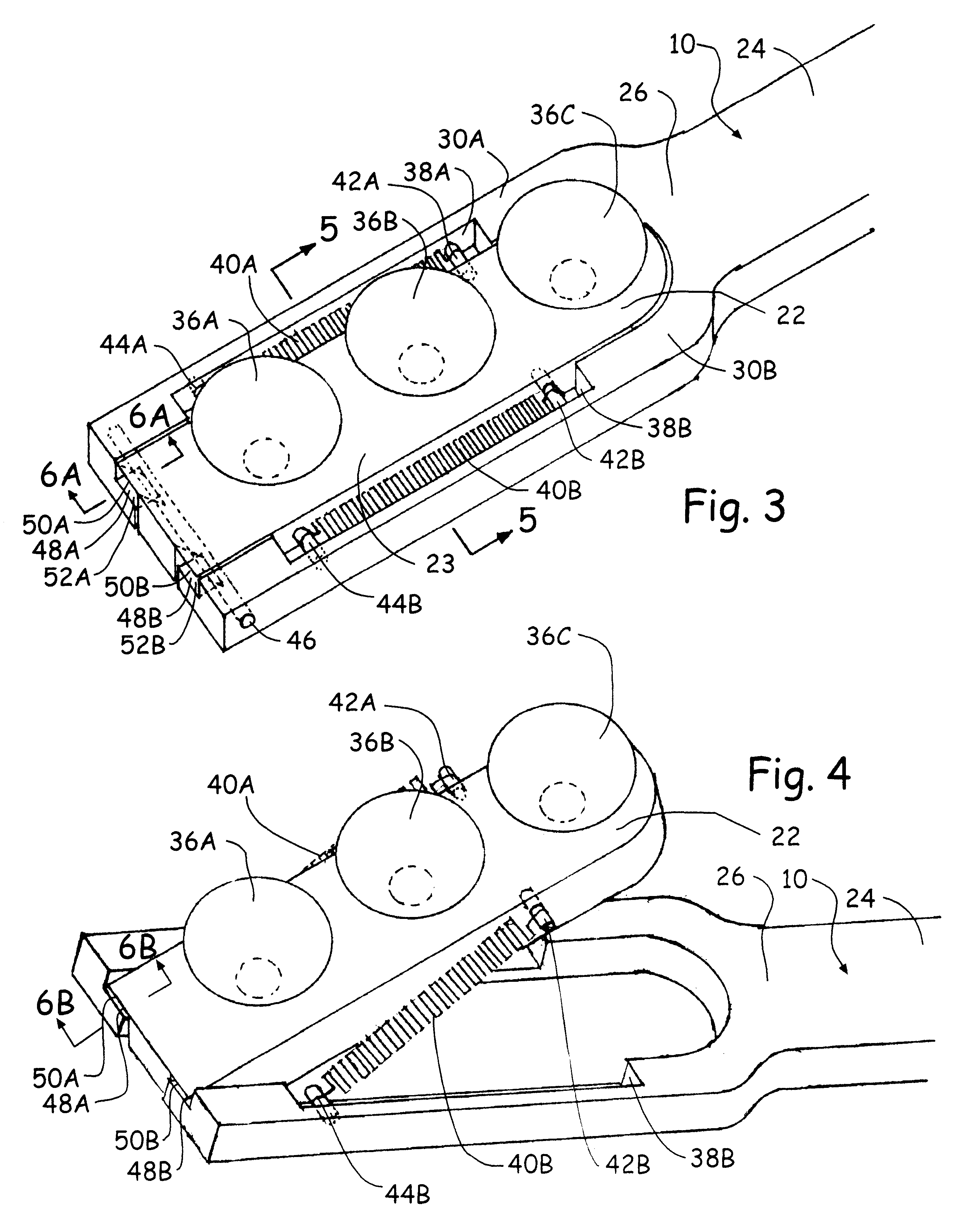Stand for supporting a musical instrument
a technology for musical instruments and stands, applied in the direction of instruments, machine supports, music aids, etc., can solve the problems of affecting the stability of instruments, and affecting the sound quality of instruments
- Summary
- Abstract
- Description
- Claims
- Application Information
AI Technical Summary
Problems solved by technology
Method used
Image
Examples
Embodiment Construction
To use the instrument stand 10, one first attaches stand 10 to back surface 18 of instrument 12 by depressing suction cups 36A, B & C against back surface 18. Position ing of the stand 10 relative to instrument body 14 is such that foot portionsb lie approximately even with instrument rear surface bottom edge 20, while the tip of third foot portion 56 overhangs bottom edge 20 by a short distance.
As illustrated in FIG. 8A, once stand 10 has been attached, one holds the instrument 12 by gripping neck 16, positioning instrument 12 in a generally upright position above the floor or other supporting surface. In this position, instrument 12 is lowered until third foot portion 56 comes into contact with the floor or other supporting surface, as shown in FIG. 8B, where friction between the tip of third foot portion 56 and said floor fixes the position of third foot portion 56 relative to said floor. Now, as shown in FIG. 8C, instrument 12 is pivoted along the centerline of pin 46 as the bot...
PUM
 Login to View More
Login to View More Abstract
Description
Claims
Application Information
 Login to View More
Login to View More - R&D
- Intellectual Property
- Life Sciences
- Materials
- Tech Scout
- Unparalleled Data Quality
- Higher Quality Content
- 60% Fewer Hallucinations
Browse by: Latest US Patents, China's latest patents, Technical Efficacy Thesaurus, Application Domain, Technology Topic, Popular Technical Reports.
© 2025 PatSnap. All rights reserved.Legal|Privacy policy|Modern Slavery Act Transparency Statement|Sitemap|About US| Contact US: help@patsnap.com



